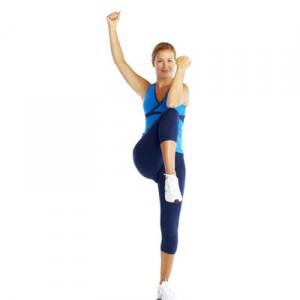“Make the impossible possible, the possible easy, the easy elegant…” – Moshe Feldenkrais, founder Feldenkrais method of somatic education
The Movement Alphabet
Watch someone walk, run, throw, swing, dance, sit down, shovel snow or pick up something off the ground–watch someone move in other words. Look closely. You’ll notice movement at very nearly each and every joint. From the toes to the ankles to the knees, hips, spine, shoulders, elbows, wrists, fingers and possibly the jaw you’ll likely see at least some degree of movement to the point that you may realize each and every joint plays a role in our larger movements.
If we think of these general movements as words, then movement at each individual joint is a letter of an alphabet. This alphabet is the very foundation of how we move. So the better our command and recognition of each letter, the smoother, the faster, the stronger our movement no matter what our event or activity.
Z-Health R-Phase: Learning the Alphabet
R-Phase is the foundation of Z-Health. The R stands for injury Rehabilitation, movement Restoration all via neural Re-education. We accomplish these goals in R-Phase by establishing (or re-establishing) a connection between the brain and all of our joints. Why? Because the majority of chronic pain issues are movement problems. (i.e. “It hurts when I reach over head/climb stairs/turn my head…” In other words pain is involved in movement.) It’s the disconnection of these components that often result in poor movement and thus pain. Or to use the alphabet/word analogy, it’s like we’re trying to spell a word but we don’t have all the letters we need, so our words are no good. Our alphabet is complete once we have precise perception and control at every speed of every joint in the body.
Master the Foundations to Become Excellent
Many top athletes are known for their dedication to practice. Michael Jordan was known to show up before practice and games to shoot free throws. No noise. No opponent. No distractions. Just him a ball and a basket. And he worked on mastering the very basic element of his sport, over and over and over… Kobe Bryant is said to have similar habits. Michael Irvin of the Dallas Cowboys was known for being the first on the practice field and the last to come off. Further, a little known fact about boxing champ “Sugar” Ray Leonard was that he used to practice his punches and footwork in super-slow motion so he could perfect his technique. In a recent New York Times article, former diving-champ-turned-coach Greg Louganis “insists his divers show proficiency in one fundamental before moving on to the next.” The article goes on to say:
“As a competitor, Louganis’s mechanics were so sound that China’s national coaches in the 1980s pored over film of his dives and tailored their programs to match his technical precision. Perhaps not surprisingly, the Chinese have dominated diving much as Louganis did.”
Do you see a trend here?
The best in the world are intensely dedicated to mastering the simplest details of their sport. Whether they know it or not, they are working toward Moshe Feldenkrais’ ideal to, “Make the impossible possible, the possible easy, the easy elegant…” It’s not some in-born “talent” that we see in the masters of sports, music, etc. It’s the deeply ingrained understanding and perception of the basics that allow the great ones to become great. And the good news from all of this is that anyone–anyone–can move closer to fast, nimble, pain-free movement if we dedicate ourselves to perfecting the basics of movement.


